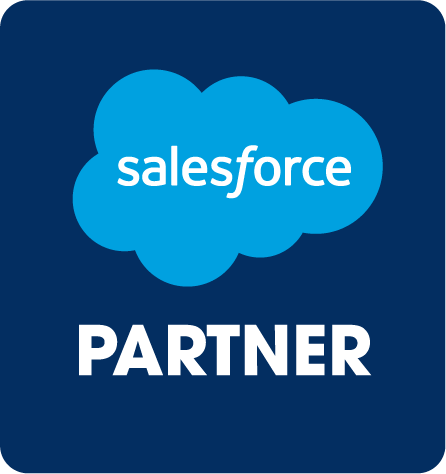
Already the world’s most popular CRM platform, Salesforce has become a global ecosystem that is vast in numbers, but also one that is being pushed to breaking point with the digital skills gap looming towards a crisis. Thus, it’s become imperative for employers who hire those platform specialists that help drive digital innovation to know not just how best to attract, but also retain Salesforce staff.
Thankfully, resources such as the Mason Frank Careers and Hiring Guide: Salesforce Edition are available to help organizations to meet employee needs. The annual publication is the biggest independent study of Salesforce professionals anywhere in the world, with more than 1,100 people taking part in this year’s survey.
While it’s a great guide for Salesforce pros to inform their own career decisions, as an employer it will also give you unrivalled insight into what Salesforce personnel value most and what makes them stay with an organization.
So what are the key takeaways from this year’s Careers and Hiring Guide?
Hiring vs Retention
Companies often prioritize talent acquisition due to the considerable impact it has on business performance, but overlooking employee retention can be catastrophic for businesses. Hiring top Salesforce employees will certainly benefit your business but losing staff due to a high turnover rate will disrupt your operations and may negatively impact your workplace culture.
Without adequate talent acquisition and retention, skills gaps can quickly become apparent. If you don’t have the right mix of Salesforce professionals on your team, for example, you will struggle to complete projects on time, within budget, and with maximum efficiency.
Furthermore, high rates of employee turnover are costly for businesses. When you are regularly having to re-fill the same positions or are left without specialist personnel for weeks or months on end, productivity diminishes while expenditure increases.
It’s evident, therefore, that both acquiring and retaining Salesforce talent should be a top priority for businesses. By attracting the best employees and enticing them to stay with your firm, you can build robust teams that deliver enhanced value and optimize your company’s performance.
What Attracts People to Salesforce Roles?
Once you know what attracts professionals to Salesforce roles, you’ll be well-placed to acquire the best talent in the industry. This year’s guide found that 92% of end user employees consider workplace benefits to be important when deciding whether to accept a new role. Of these, 41% said that at least four weeks of paid time off was important, while 44% cited home working opportunities as an important factor.
Bonuses, healthcare/medical insurance, and flexible working also featured highly, with 31%, 24%, and 21% of respondents respectively reporting that these perks would entice them to consider a new job offer.
For the 55% of end user employees who would consider working for a Salesforce partner, it was the opportunity to increase earning potential that was most important, closely followed by opportunities to expand on skills, knowledge, and experience with Salesforce products. Other factors included professional development, with 71% citing it as a key consideration, while 62% would switch to a role with a Salesforce partner to work on a diverse range of projects and 60% would do so to achieve more flexibility.
When it comes to Salesforce freelancers who would consider accepting a permanent role, it was a competitive salary, job stability, and a stable income that ranked most highly, but 52% and 45% would also consider the transition to access career progression opportunities and homeworking, respectively.
It’s clear, therefore, that there are strong themes throughout the Salesforce ecosystem, with professionals valuing flexibility and training, as well as promotional opportunities and career development. However, the nuanced differences across different Salesforce sectors can be used to tailor remuneration packages based on the role, rank, and candidate in question.
Maximizing Retention Rates in Salesforce Teams
Now you’ve got an insight into what attracts top Salesforce talent to new roles, you’ll also need to know which factors make them stay with an existing employer. This information can empower companies to optimize their own working environments to increase retention rates and reduce employee turnover.
One key finding from the survey in this regard is that a lack of career and promotional prospects caused 40% of employees to consider a new role, while 40% would consider switching employers to access new challenges. However, in-house factors are important too, as 30% and 28% of respondents cited workplace environment and company culture, and a lack of leadership and vision, as reasons to consider a new job role.
While 75% of participants reported overall job satisfaction, this figure drops to just 69% and 71% when it comes to company culture and work-life balance. Additionally, only 65% are satisfied with their career progression and 61% of respondents are satisfied with the training opportunities available to them. The good news is that many of these involve fixes that don’t require significant financial investment, so if you’re willing to tailor the culture around the needs of your Salesforce team, then you could become a much more attractive proposition when it comes to an employee seeing their long-term future with you.
Building and Maintaining Top Salesforce Teams
To ensure you’re attracting and retaining the best Salesforce professionals, there are a number of ways you can improve your reputation as a Salesforce employer, such as:
-
Sponsoring Training and Certifications
Upskilling and training opportunities are important to Salesforce professionals across the board, so implementing sponsored training and investing in certification programs can be a sure-fire way to attract and retain candidates. Providing a stipend for trainees and/or offering paid time off while studying can motivate Salesforce professionals to accept a new role or remain in their existing position, for example.
-
Implement Flexible, Hybrid, and Homeworking Arrangements
Prior to the pandemic, 49% of Salesforce professionals benefited from homeworking opportunities, while 41% had flexible working hours. However, an increasing number of companies switched to remote working during the pandemic, and this is a change that many professionals want to make permanent.
As many Salesforce roles can be undertaken remotely, companies can implement flexible, hybrid, and homeworking arrangements relatively easily to reflect post-pandemic needs and meet candidates’ expectations. This is no longer a much sought-after perk, it’s the norm that most of your rivals for Salesforce talent are offering.
-
Enhance Your Company Culture
A lack of leadership and vision or poor company culture is a common cause of high employee turnover, and businesses that are known for delivering a poor work environment will struggle to attract candidates too.
Developing your company culture and making your workplace a more enjoyable environment are simple yet effective ways to boost acquisition and retention rates throughout the Salesforce ecosystem. Even when teams are working remotely, it’s important that a strong company culture is established so that staff feel valued and recognized. This strengthens team bonds and helps to boost trust and confidence throughout departments. Having this in place makes someone much more likely to ‘get’ you, and once you have this buy-in from staff members you’re giving yourself a real advantage when it comes to holding onto team members for longer.
Outperforming Your Competitors as a Salesforce Employer
If you want to acquire and retain the most talented Salesforce professionals, you will need to outperform other companies that are hiring Salesforce specialists. Essentially, you need to become a top Salesforce employer in order to entice candidates to join your team and motivate them to stay.
There are a variety of ways to do this, such as improving your range of employee benefits and optimizing your work environment, but increasing diversity throughout your recruitment process can be highly effective too.
Diverse teams are typically more productive and innovative, which leads to better commercial performance, yet a lack of diversity remains commonplace throughout the industry. Instead of using the same recruitment practices to find new hires, diversifying your strategy will enable you to build a varied and comprehensive Salesforce talent pipeline to satisfy new roles as they arise.
Considering only 8% of survey respondents were aware of their employer using blind hiring tactics, for example, there are many ways you can improve your offering when it comes to Equality, Diversity and Inclusion in order to get the edge when it comes to finding and keeping Salesforce talent.
Still Unsure?
The guide covers answers across thousands of data points, which makes it a comprehensive guide to what Salesforce professionals want and need. Having this unrivalled power in your hands gives you a real advantage when it comes to attracting and retaining the best Salesforce talent, but it would be remiss of us to suggest it’s the only way to get the edge.
As a company with access to more Salesforce professionals than anyone else on the planet, we know what makes people tick within the community. When you work day in, day out with only Salesforce professionals, you get an intimate view of the community and an instinctive feel for what they want and need from an employer.
So, if you’re undecided what the guide means for your organization, why not get in touch with us today to discuss your own hiring needs? Or, if you know what you want but aren’t sure where to get started, start searching for talented Salesforce candidates now.


